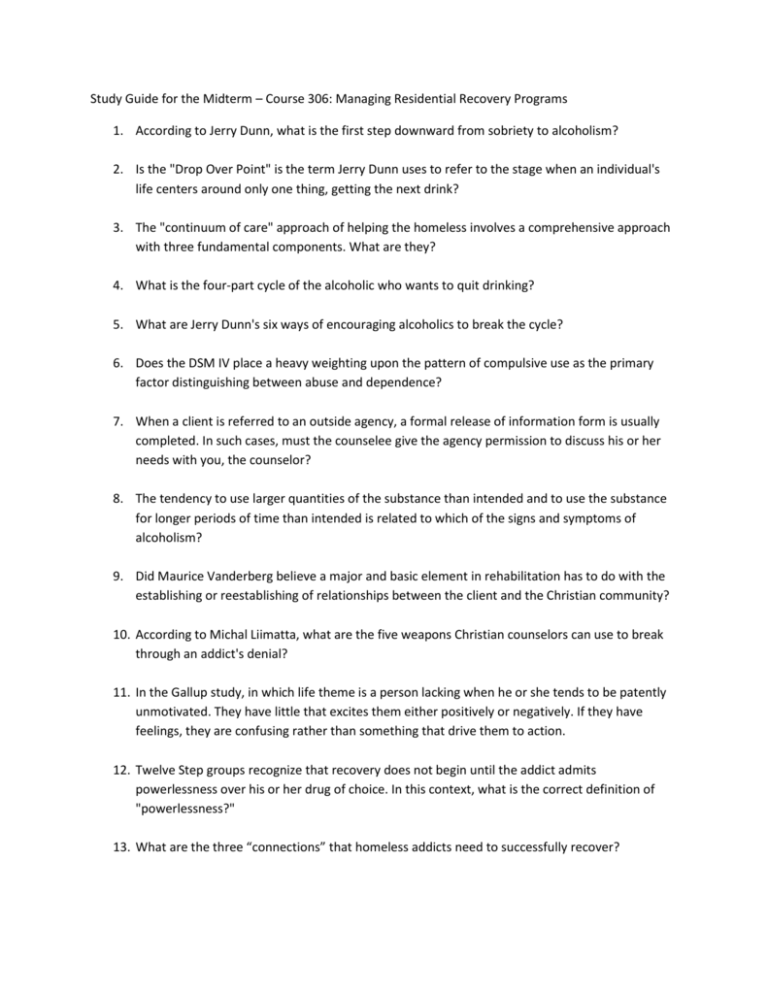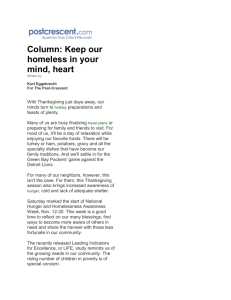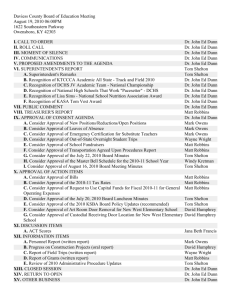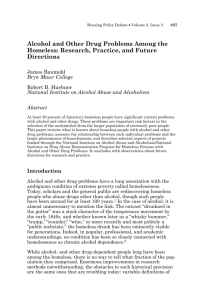Study Guide for the Midterm – Course 306: Managing Residential
advertisement

Study Guide for the Midterm – Course 306: Managing Residential Recovery Programs 1. According to Jerry Dunn, what is the first step downward from sobriety to alcoholism? 2. Is the "Drop Over Point" is the term Jerry Dunn uses to refer to the stage when an individual's life centers around only one thing, getting the next drink? 3. The "continuum of care" approach of helping the homeless involves a comprehensive approach with three fundamental components. What are they? 4. What is the four-part cycle of the alcoholic who wants to quit drinking? 5. What are Jerry Dunn's six ways of encouraging alcoholics to break the cycle? 6. Does the DSM IV place a heavy weighting upon the pattern of compulsive use as the primary factor distinguishing between abuse and dependence? 7. When a client is referred to an outside agency, a formal release of information form is usually completed. In such cases, must the counselee give the agency permission to discuss his or her needs with you, the counselor? 8. The tendency to use larger quantities of the substance than intended and to use the substance for longer periods of time than intended is related to which of the signs and symptoms of alcoholism? 9. Did Maurice Vanderberg believe a major and basic element in rehabilitation has to do with the establishing or reestablishing of relationships between the client and the Christian community? 10. According to Michal Liimatta, what are the five weapons Christian counselors can use to break through an addict's denial? 11. In the Gallup study, in which life theme is a person lacking when he or she tends to be patently unmotivated. They have little that excites them either positively or negatively. If they have feelings, they are confusing rather than something that drive them to action. 12. Twelve Step groups recognize that recovery does not begin until the addict admits powerlessness over his or her drug of choice. In this context, what is the correct definition of "powerlessness?" 13. What are the three “connections” that homeless addicts need to successfully recover? 14. What does Michael Liimatta mean when he says, "Grace flows freely through unclogged conduits?" 15. What is the major cause of homelessness according to Michael Liimatta? 16. According to Michael Liimatta, what happens in a "self-maintaining, self-regulating healing community?" 17. Is the primary focus of the first five steps of the Twelve Steps is reconnecting with self and with God? 18. Why is it so important that participants be dismissed immediately for use of alcohol or drugs while in a recovery program? 19. Has the average age of homeless men and women in the United States and Canada has risen in the past twenty years? 20. What is the meaning of the term "disaffiliation?" 21. The book, A Nation In Denial, do Donald Burnes and Alice Baum state that 65% to 85% of all homeless adults suffer from chronic alcoholism, drug addiction, mental illness, or some combination of all three, often complicated by serious medical problems? 22. To what was Michael Liimatta referring when he talked about the "gentrification of addiction treatment?" 23. In the study by the Gallup organization, what are the six "Life Themes" that were identified in the lives of people who recovered from homelessness? 24. If a program participant uses alcohol or drugs should they be dismissed immediately with no possibility of returning to the program? 25. If a person is dismissed from a recovery program and is allowed to return, should they be required to start the program from the very beginning.









